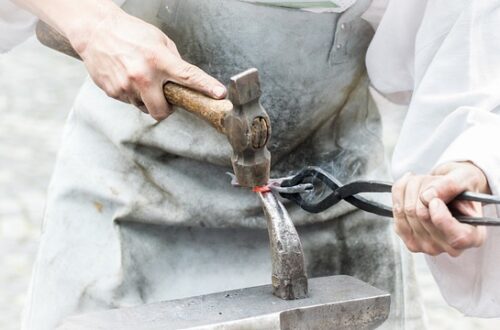How to Create Your Own Homesteading Kitchen

Whether you’re a city-dweller with a yen for the country life or a rural resident wanting to get back to your roots, homesteading offers a unique opportunity to live off the land and enjoy the satisfaction that comes from being self-sufficient. Any homestead is incomplete without its own homesteading kitchen!
When one thinks of a homestead, they may think of a large piece of land with a farmhouse and lot of animals like cows and sheep. However, the heart of any homestead is the kitchen.
This is where meals are prepared from scratch using fresh, local ingredients–maybe even from your own homesteading garden! This is also where the family gathers to eat, laugh and spend time together. Here are some tips for creating your very own homesteading kitchen.
{Affiliate links included below}
What is a homesteading kitchen?
On a basic level, a homesteading kitchen is the room in your house where food-related homesteading activities take place. It typically includes things like a stove, sink, and counter space for preparing food. Homestead kitchens are often used for canning and preserving food, as well as for baking bread and other baked goodies.
But in a deeper sense, a homesteading kitchen is like the symbolic heart of your home.
Homesteaders often take pride in their kitchens, since they often spend a lot of time there preparing meals and getting food ready for long-term storage. A well-stocked and organized homestead kitchen can make all the difference in whether or not a homesteader is successful.

The benefits of a homestead kitchen
When done the right way, a homesteading kitchen is a great way to save money and be more self-sufficient. With a little planning and some basic equipment, you can grow your own food, cook delicious meals, and can or otherwise preserve fruits, vegetables and meats for the winter months.
Here are just a few of the many benefits of having a homestead kitchen:
- Save money on groceries – By growing your own fruits and vegetables, you can save a lot of money on your grocery bill each month. You can also save money by cooking from scratch and avoiding processed foods.
- Be more self-sufficient – A homestead kitchen allows you to be more self-sufficient and less reliant on the grocery store. If you grow your own food and preserve it properly, you can have enough to last through the winter months without having to as much from the store.
- Improve your health – Local, home-grown food is almost always more nourishing than conventionally raised food that is produced with all kinds of toxic chemicals and unhealthy additives.
- Satisfaction of doing it yourself – By raising and processing more of your own food, you’ll have a sense of pride as you gain basic homesteading skills. You could even then share your knowledge with friends or to a wider audience through social media or video.
Tips for creating a homestead kitchen
A homestead kitchen is a place where family and friends can gather to enjoy good food and great conversation. Here are a few tips on how to create your own homesteading kitchen:
- Start with a good layout. The kitchen should be designed so that it is both functional and inviting. If you’re building a new house, you can customize the kitchen in a way that has lots of countertops for processing food. You’ll want lots of good lighting and possibly a large island as well.
- Use quality materials. When choosing cabinets, countertops, and appliances, opt for durability over style (although they’re not always in opposition).
- Make it your own. Add personal touches to the space that reflect your taste and personality. Simple things like cute kitchen signs can go a long way to making your kitchen look warm.
- Keep it clean. A clean kitchen is a happy kitchen! Be sure to keep surfaces wiped down and dishes put away. This is particularly important when preparing food to avoid the spread of germs.
- Organize, organize, organize! A well-organized kitchen will make cooking and entertaining much easier – and more enjoyable!
- Stock up on essentials. Consider joining a food co-op such as Azure Standard.
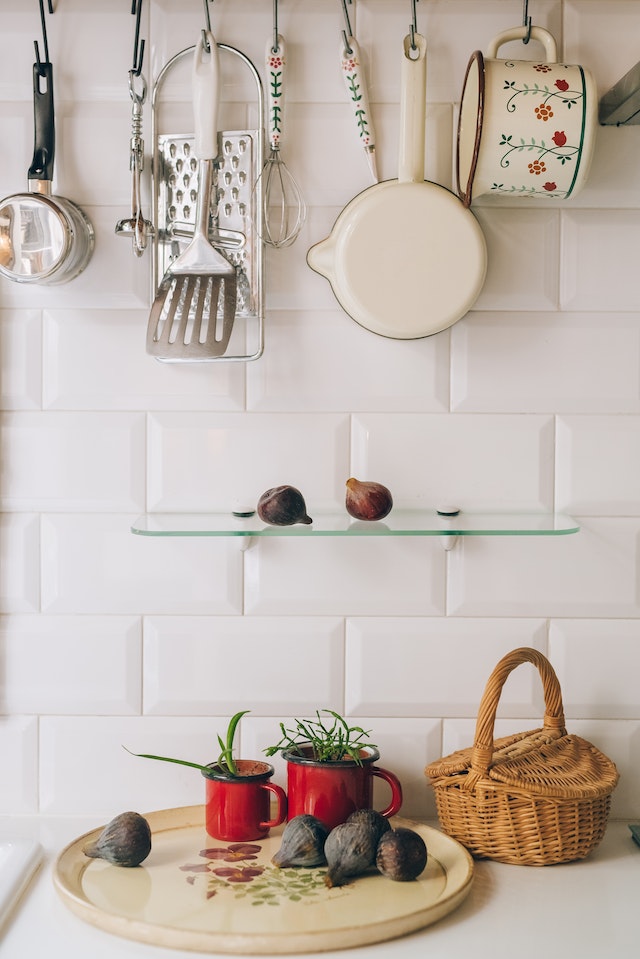
Homesteading Kitchen Tools
A homesteading kitchen needs more than just a basic set of pots and pans. You’ll need a wide variety of cooking equipment to have the best experience and most success in your kitchen.
Here we go over six of the most important tools in a homestead kitchen.
Cooking with a mandoline slicer
A mandoline slicer is a tool used to cut vegetables or other foods into thin slices. These slicers come in various sizes and functions. Some are more compact than others, while others can not only slice and spiral vegetables but also grate things like cheese.
These kitchen appliances are available in both stand-mounted and hand-held versions. Stand-mounted models are more stable and easier to use, but they also require more maintenance and cleaning. Hand-held models are more convenient but less stable, and are limited in the type of blades that can be used.
There are many uses for a mandoline slicer in the homesteading kitchen. It can be used to make a variety of food, from salads to slaws and desserts.
Many mandoline slicers can slice cheese and vegetables as thin as paper, and some models have interchangeable blades to cut different types of foods. Safety is another key feature, so make sure to buy one that has a sturdy rubber base and a safety grip to avoid accidents while cutting food.
In addition to making thin, spiral slices, a mandolin slicer can also be used to create julienne cuts. The blade of a mandolin spiral slicer is extremely sharp, so it is important to take care when using it.
Making homemade butter
Making your own butter in your homesteading kitchen is an excellent way to keep fresh dairy products on hand. It is a fund and relatively easy task to do, even for kids. Plus, homemade butter just seems to taste better than the stuff you buy at the store!
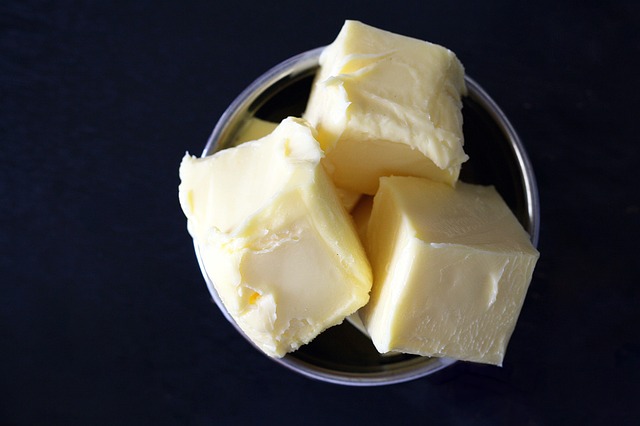
Making your own butter is a simple process that anyone can do at home with just a few ingredients. All you need is some heavy cream, a little salt, and a bowl. A deep bowl is ideal, as well as a splash cover.
Start by pouring the cream into the bowl and then add the salt. Use a stand mixer or hand mixer to beat the cream until it thickens and forms peaks. This usually takes about 10 minutes. Once the butter has formed, scoop it into a clean container and store it in the fridge.

Using a food dehydrator
Using a food dehydrator in your homesteading kitchen can help preserve foods. For example, dried apples are a fun snack that can be used in many recipes, or just enjoyed as a standalone snack. Likewise, a good dehydrator can produce powdered milk or cheese, which can be used in a variety of dishes.
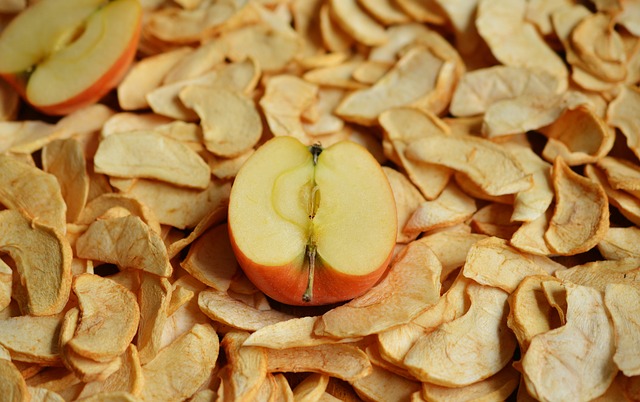
Before dehydrating food, it is important to follow the guidelines specific to your model. Certain fruits or vegetables need to be blanched before dehydrating. Others can be dipped in lemon or citric acid solution to keep them from browning. Using a dehydrator is a great way to preserve fruits and vegetables while saving money at the store.
You should know that most dehydrated foods take several hours to dehydrate completely. It may be best to dehydrate them overnight when utility charges are lower to save money on power costs. In addition, you should consider buying a higher-end dehydrator with a timer to let the machine do the work automatically.
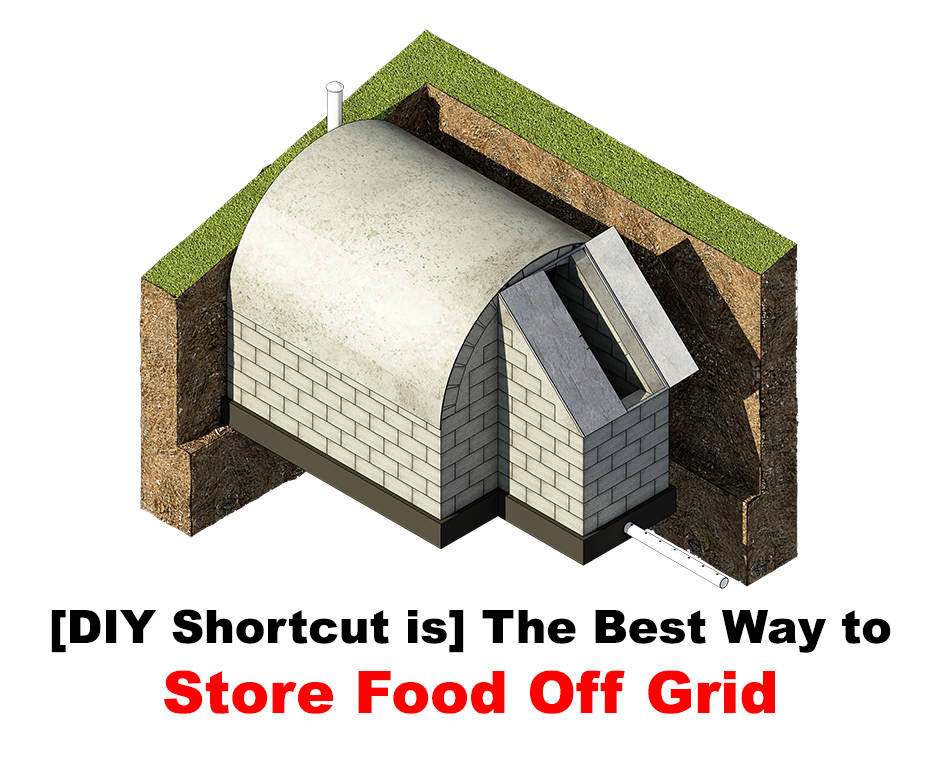
Self-Sufficient Living
Using a vacuum sealer
A vacuum sealer is an appliance that removes air from a sealed container, such as a food storage bag, and then uses heat to seal the opening. Vacuum sealing can extend the shelf life of food by preventing oxygen and moisture from entering the container.
Vacuum sealers are also useful for homesteading projects like preserving fruits and vegetables from your garden. Canning is a traditional method of food preservation, but vacuum sealing can be quicker and easier. Plus, it doesn’t require any special equipment or ingredients.
If you’re looking to save money on your grocery bill or want to start stockpiling non-perishable foods, a vacuum sealer is a valuable addition to your kitchen.
Cast iron cookware
Few things evoke images of a rustic homesteading kitchen more than a cast iron skillet or Dutch oven.
Cast iron cookware has been around for centuries and is a staple in many kitchens, especially those who enjoy homesteading. There are many benefits to using cast iron cookware, including its durability and even heat distribution. Cast iron cookware is also very versatile and can be used for a variety of different dishes.
If you’re looking for long-lasting cookware, cast iron is a great option. It’s also perfect for those who enjoy cooking outdoors over an open fire. Cast iron distributes heat evenly, so you can use it for baking, frying, or even grilling. Plus, it’s relatively inexpensive and easy to find.
Make sure to follow manufacturer’s instructions for seasoning your cast iron cookware to keep it in good shape and rust-free.
Using a canner
A canner is a great way to preserve food for later consumption. Canning is a process of sealing food in an airtight container, which can be done either using a pressure cooker or a boiling water bath canner.
Bath canners are less expensive but pressure cookers are considered more reliable due to safety components.

If you’re interested in canning, there are a few things you need to know. First, you’ll need to choose the right type and size of jars for your project. Ball jars are the most common type of jar used for canning, but there are other options available as well.
Next, you’ll need to select the right size lid for your jar. Lids come in two sizes: regular and wide mouth. Regular lids are best for fruits and vegetables, while wide mouth lids are better suited for jams and jellies.
Finally, you’ll need to choose the right type of canning recipe. There are lots of great instructional videos online about canning, and some wonderful books and manuals such as the Ball Guide to Preserving.
Final thoughts on starting a homesteading kitchen
Starting your own homesteading kitchen is a great way to be more self-sufficient and sustainable. It takes some initial planning and investment, but it is worth it in the long run.
You will save money on groceries, have a constant supply of fresh food, and know exactly where your food comes from.
With a bit of research and planning, anyone can start their own homesteading kitchen and provide for themselves and their family.






